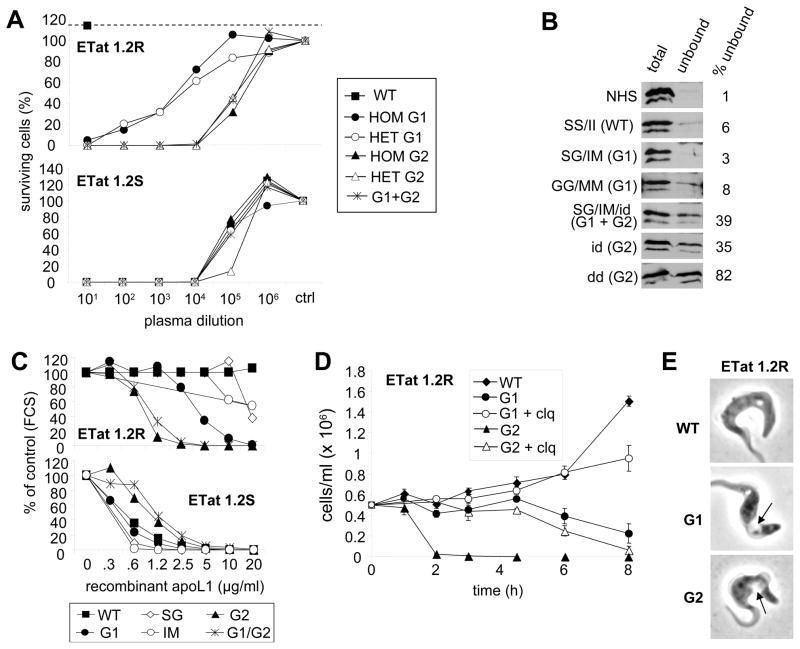Figure 3.
G1 and G2 alleles of ApoL1 kill T.b. rhodesiense. Trypanolytic potential of ApoL1 variants on normal human serum-resistant (SRA+) and normal human serum-sensitive (SRA−) T. b. rhodesiense ETat 1.2 clones. ETat 1.2R is resistant to normal human serum, and ETat 1.2S is sensitive to normal human serum. (A) Titration of trypanolytic activity in human plasma samples after overnight incubation, expressed as % survival compared to fetal calf serum control. (hom, het=homozygous and heterozygous mutations, respectively). (B) ApoL1 content of various plasma samples before and after affinity chromatography through SRA column (NHS=normal human serum; WT=wild type ApoL1; S=serine 342; G=glycine 342; I=isoleucine 384; M=methionine 384; i=insertion of N388/Y389; d=deletion of N388/Y389). (C) Trypanolytic activity of various recombinant ApoL1 variants after overnight incubation, expressed as % survival compared to fetal calf serum (FCS) control. (D) Kinetics of trypanolysis by 20 μg/ml recombinant ApoL1 variants, in the presence or absence of 25 μM chloroquine (clq). (E) Phenotype of ETat1.2R trypanosomes incubated with various recombinant ApoL1 (20 μg/ml; 1h30 and 6h incubation, for G1 and G2 respectively; the arrows point to the swelling lysosome).

